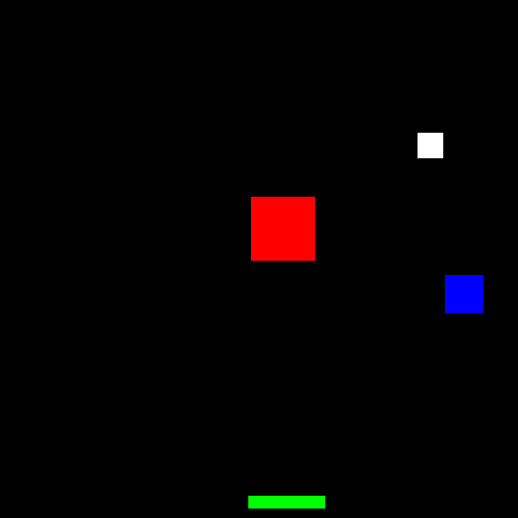Block Catcher
A retro style WebGL game.
Stats
Languages
Description
You can play a demo of the game at http://zerebos.github.io/BlockCatcher/
🎮 How to Play
Controls
← → Arrow Keys Move your paddle
SPACE Start game / Pause
Audio Button Toggle sound
Strategy Tips
- Start with pink blocks to build momentum
- Chase cyan blocks when you're confident
- Watch the timer - panic leads to mistakes
- Use audio cues to anticipate block drops
🎯 The Challenge
Time is ticking. Neon blocks cascade from the digital sky. Your mission? Catch them all.
In this retro-futuristic arena, you control a sleek white paddle in a race against time. Each block type demands different strategies:
- 🌸 Pink Blocks → 1 point • Large & leisurely • Perfect for beginners
- 🟣 Purple Blocks → 5 points • Medium challenge • The sweet spot
- 🔷 Cyan Blocks → 25 points • Lightning fast • High risk, high reward
Goal: Score 500 points in 60 seconds. Sounds easy? Think again.
Architecture Highlights
🏗️ Clean Architecture
src/
├── managers/ # System orchestration (audio, DOM, input, rendering, pools)
├── entities/ # Game objects (player, blocks) with behavior
├── utils/ # Pure functions (math, geometry, vectors)
├── audio/ # Modular sound effect system
├── types/ # TypeScript definitions
└── styles/ # Synthwave CSS architecture
🧪 Testing Philosophy
- Unit tests for individual components
- Integration tests for game mechanics
- DOM tests using Happy-DOM for realistic environments
- Edge case coverage including accessibility scenarios
🚀 Performance Features
- Object pooling prevents garbage collection hitches
- Efficient collision detection using AABB algorithms
- Minimal DOM manipulation with batch updates
- Optimized bundle under 20KB total
- WebGL Shaders for hardware acceleration
📊 Technical Stats
| Metric | Value |
|---|---|
| Bundle Size | 18.81 KB (JS) + 13.40 KB (CSS) |
| Test Coverage | 141 tests, 100% core functionality |
| Performance | 60 FPS WebGL rendering |
| Accessibility | WCAG 2.1 AA compliant |
| Browser Support | All modern browsers with WebGL |
🌟 The Tech Stack
Why these choices?
- Bun → Lightning-fast runtime and bundler
- TypeScript → Type safety without complexity
- WebGL → Hardware-accelerated graphics
- Web Audio API → Immersive sound design
- Happy-DOM → Realistic testing environment
- GitHub Actions → Automated deployment
